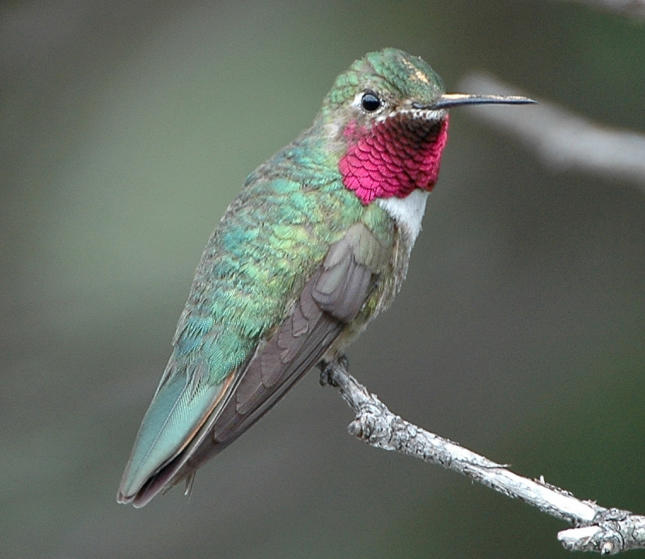Fun Facts About Hummingbirds

GENERAL INFORMATION
- There are 18 hummingbird species in North America. Hummingbirds are found no where else in the world except the New World (North, Central, and South America.)
- There are over 325 species of Hummingbirds, making them the second largest bird family in the world, second only to flycatchers
- Hummingbirds lay the world’s smallest bird egg.
- Hummingbirds weigh 1/10th of an ounce; about the weight of a penny.
- Hummingbirds’ brains are about the size of a BB.
- A mother hummingbird weighs only about eight times more than her egg.
- Hummingbirds can extend their tongue approximately a distance equal to the length of their bill.
- Hummingbirds can fly up to 60 miles per hour, but typically fly at 30-45 miles per hour.
- They can hover and are the only birds able to fly backwards and upside down. They can do this because of an extremely mobile shoulder joint.
- Their wings beat 20-80 times per second.
- Hummers avoid deep water, but will bathe in shallow pools or dishes, and love to take showers in sprinklers and misters.
- To keep their feathers in top shape, hummingbirds will leaf-bathe by fluttering against wet leaves.
- Hummingbirds can be very feisty and aggressive when defending their territories and will even chase away much larger birds.
- The iridescence in the hummingbird’s feathers has led them to be called the “jewels of the garden.”
- The male hummingbird’s gorget (throat patch) is iridescent and reflects certain color wavelengths.
- Some of these unique throat colors can be used to identify specific male species. Anna’s Hummingbird flashes neon pink; Costa’s is violet; Magnificent is green; Ruby-throated is ruby-red; and the Blue-throated is vivid blue.
- Hummingbirds have been known to fall prey to Bull Frogs, Praying Mantis and large spiders.
- Female Hummingbirds’ tongues are longer than the males.
Nesting
- Hummingbirds generally lay 2 eggs about the size of a blueberry.
- Hummingbirds use spider webs as glue to attach the nest to a tree branch as well as a binding agent for the building materials.
- The nest is about the size of a golf ball; around 1 ½ inches in diameter.
Ruby-throated Hummingbirds
- Have one of the highest nesting success rates of any Neotropical migrant.
- Ruby-throated Hummingbirds will have two broods, each taking 45 days from nest construction to fledging.
- Only about 20% of Ruby-throated Hummingbird fledglings survive their first year.
Food & Eating Habits
- Hummingbirds eat about every 10 minutes.
- They do not have an innate preference for red. Each hummingbird must learn the association between red flowers and food.
- During one freeze, killing food sources, a male Anna’s was seen to kill another, using its bill as a spear. You can help birds through such emergencies by providing extra feeders; even simply serving sugar water in any small dish for a few days.
- Hummingbirds can drink up to twice their body weight in nectar every day (most birds only eat ¼ - ½ their body weight).They drink nectar from plants and sugar water from feeders.
- Hummingbirds lap up nectar with their long tongues. There is a groove on either side of the tongue that creates a capillary action to help draw the nectar up the tongue and into the mouth during the lapping action.
- While lapping up nectar, Hummingbirds can move their tongues in and out of their bill at a rate of up to 12 times a second.
- They eat insects and insect eggs on the ground and in trees. They love spiders and spider eggs. They use their bill and not their tongue to catch insects.
- One research study recorded an Anna’s Hummingbird visiting over a 1,000 flower blossoms a day.

